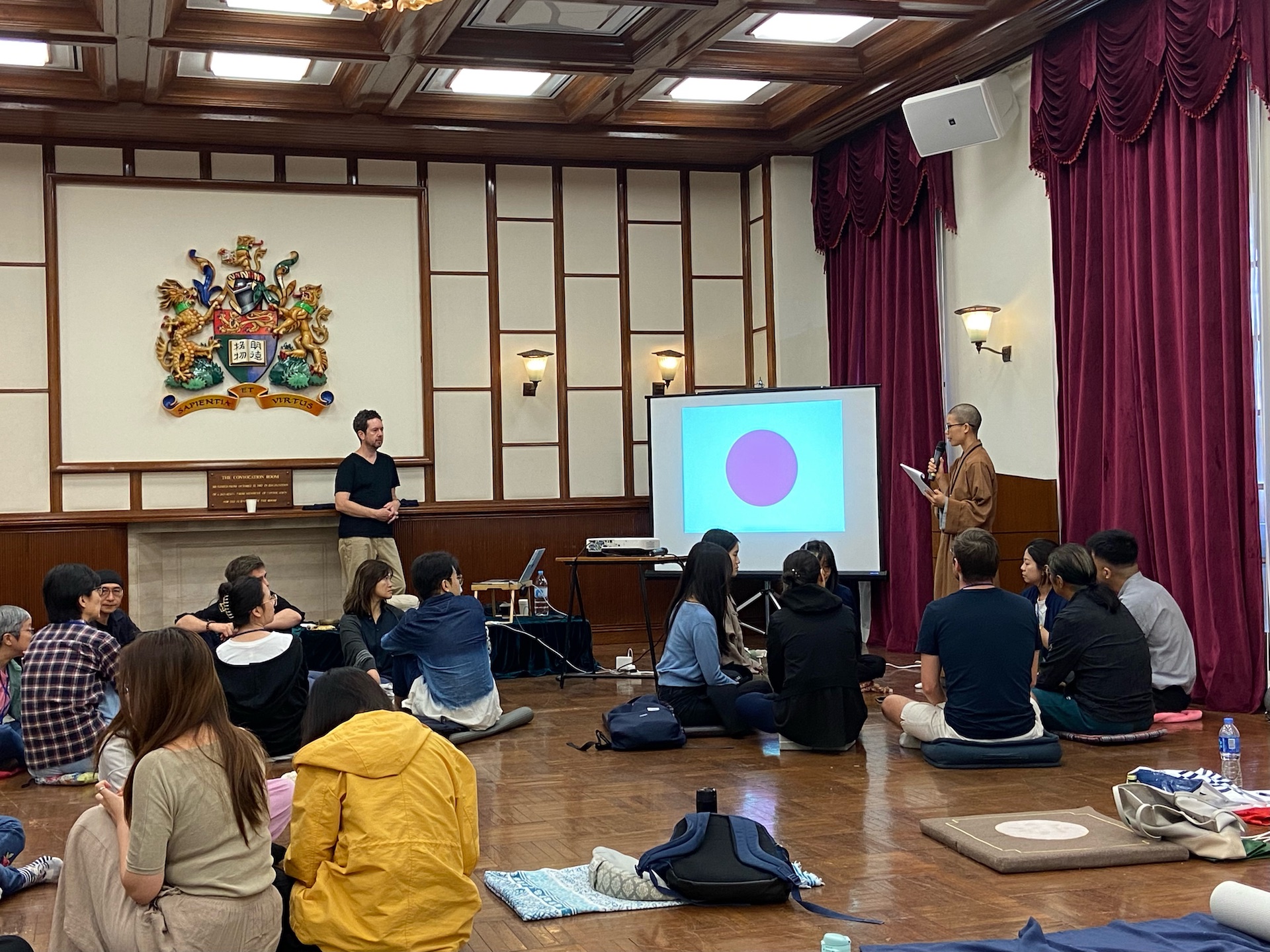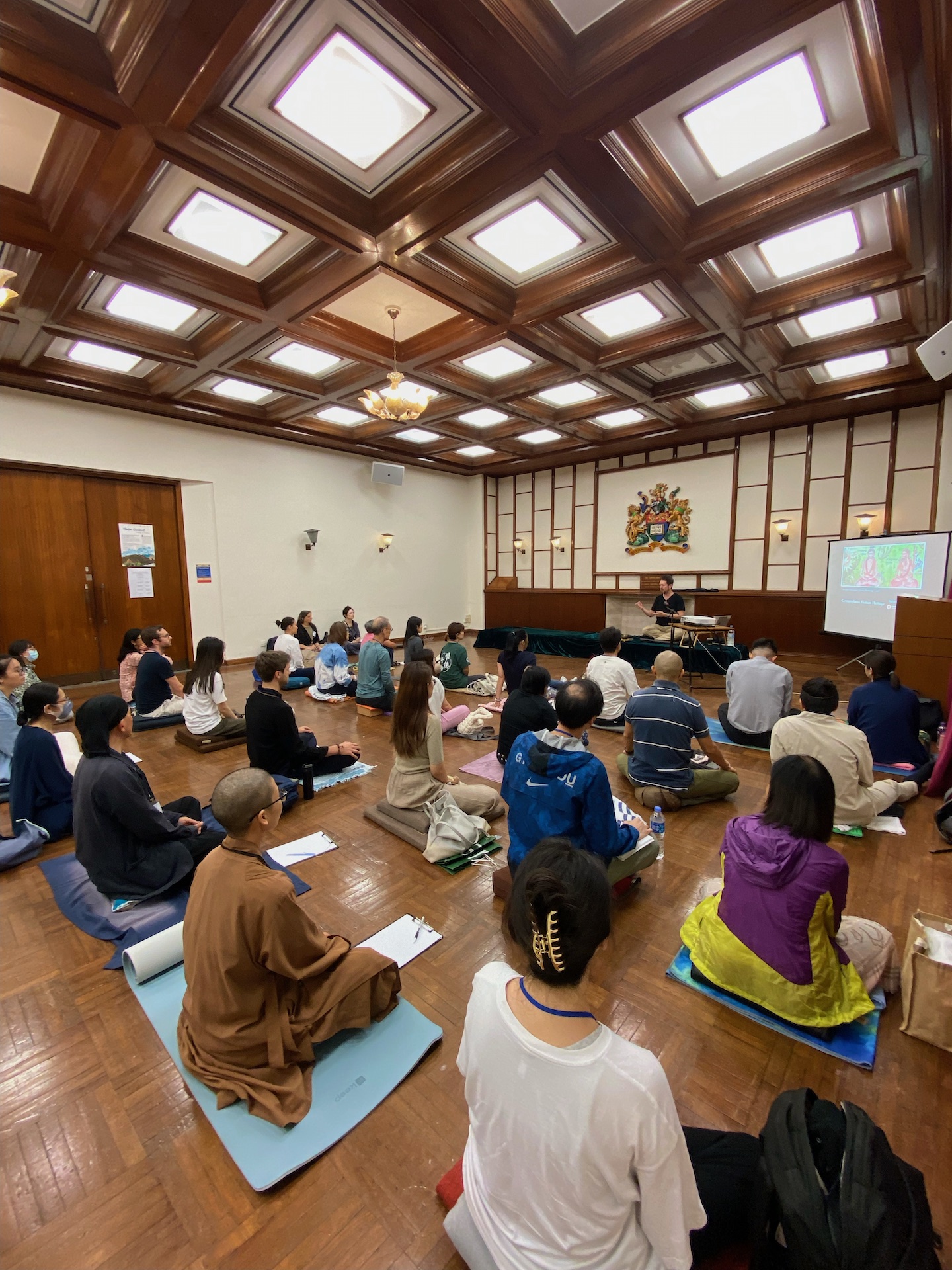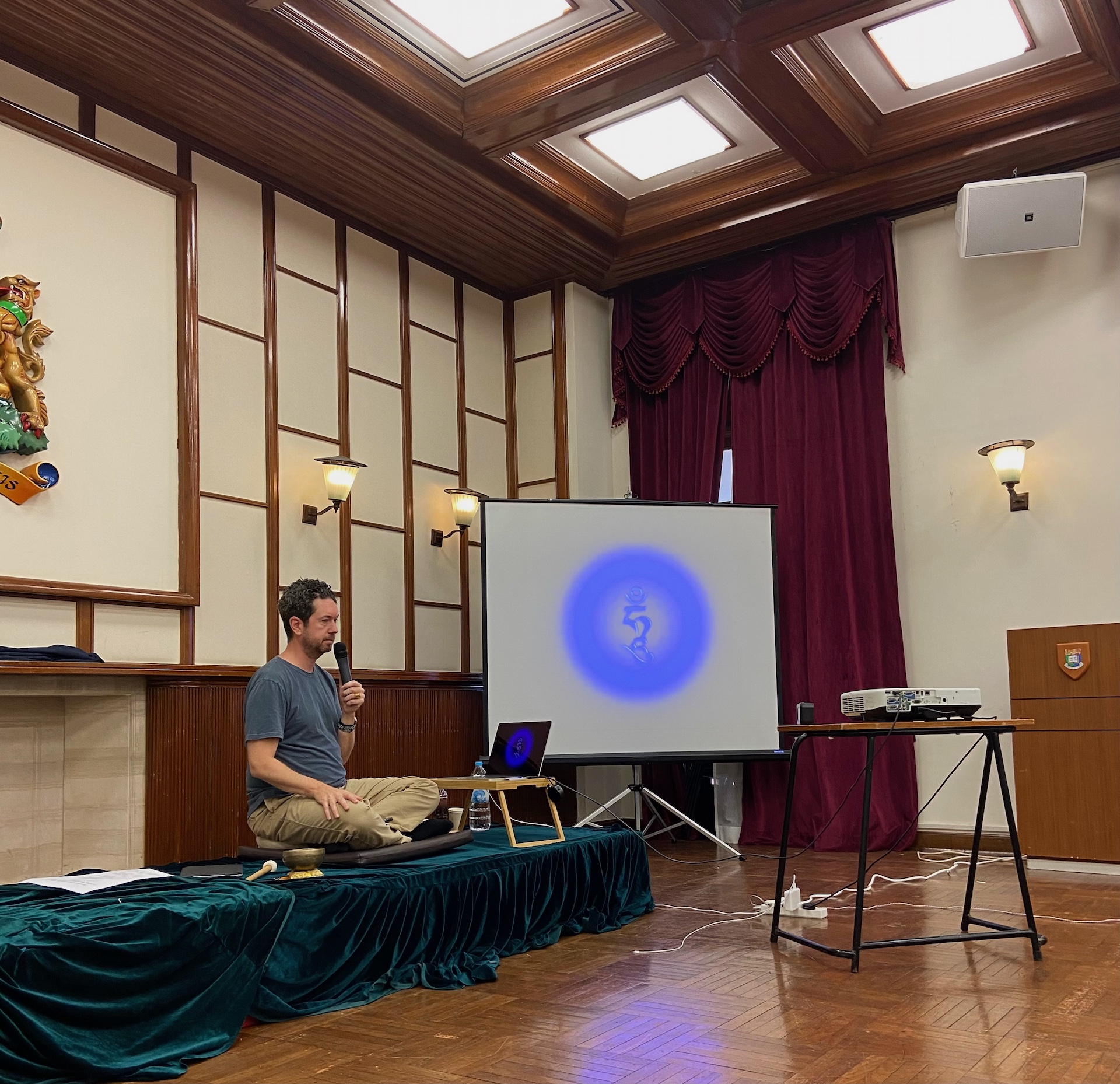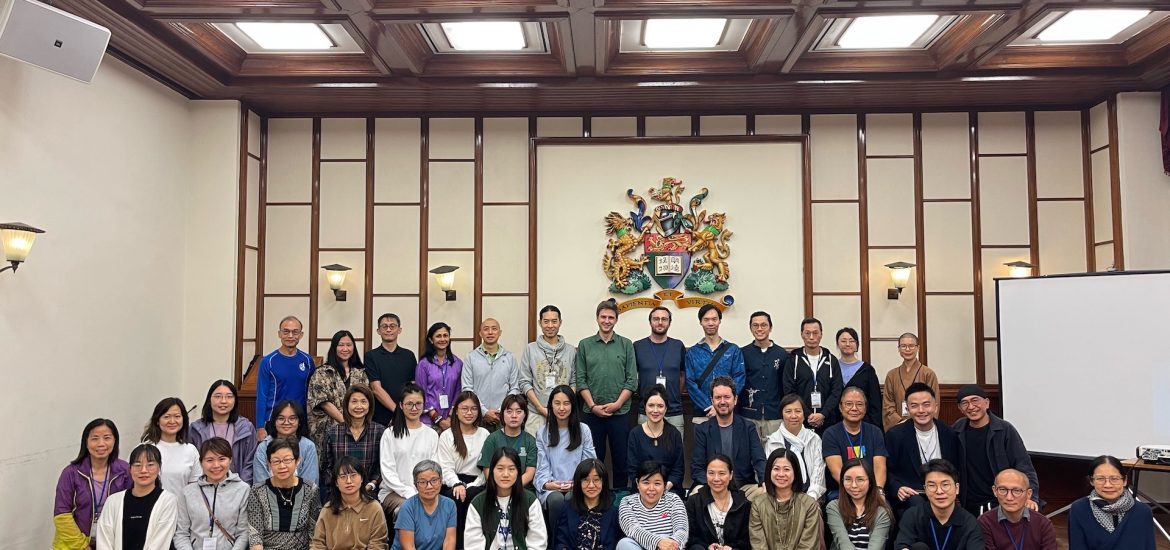Tibetan meditation is diverse, vibrant, and unique. Anything can be migpa, an object of observation, whether it be a lamp, destructive emotions like anger, or your favorite guru. The question is always, “How do we meditate like that?” Professor Michael Sheehy’s two-day immersive program, Towards Contemplative Fluency: A Workshop on Tibetan Buddhist Contemplative Practices on 21and 22October at the University of Hong Kong (HKU) gave us an answer. Sheehy is a meditation researcher, prolific scholar, and experienced meditation practitioner.
Mindfulness can be described as the aperitif of meditation. Currently, mindfulness is the most celebrated aspect of meditation. The full range of contemplative practices however indulge us with rare ingredients such as imagination, visualization, dreams, and embodiment with the single aim of human flourishing. Our mind has no boundaries. Yet it is the same mind that traps us into being literally “narrow-minded.” Sheehy described these contemplative techniques as technologies to unravel the capabilities of our mind.
Theory can only take you so far. Sheehy, a pioneer in academia, is revolutionizing the application of a thousand-year-old tradition. This study and multi-disciplinary collaboration on contemplative research is transforming the idea of meditation to make it accessible to the lives of many through a pragmatic and scientific approach.

Meditation can be rather ambiguous. You can follow the voice of a teacher and imagine what they instruct you or you can count your breath. During the workshop, one question was reoccurring regardless of the topic, “Am I doing it right?” Our usual constructs are utterly binary and suggestive of a one model answer. Most of the time, meditation experience is not discussed openly, it’s a rather private matter. Through post-meditation discussion groups, the workshop opened liberating possibilities to share and know experience. Every experience is unique, and every thought is distinctive. Sharing and active listening slowly melted away the judgement of what meditative experience “should be.”
The social aspect of meditation reiterates the importance of sangha, the community. Support groups in the workshop fostered an encouraging environment and normalized a spectrum of meditative experiences. This is very powerful because it provided a compelling reason for participants to come back and meditate rather than have intimidating thoughts, which could have hindered our practice before it even took off.

How can we see reality as it is? The Buddhist tradition’s standard answer will be study, contemplation, and meditation with our 84,000 Dharma doors of scriptures and commentary! Sheehy made it very easy for us to taste tranquility and move away from deep-rooted illusions, in just two days. The passages and meditation instructions that he presented in translation were not unheard of. Yet the way he presented them was like a 3 Michelin star chef upgrading otherwise normal ingredients into an astonishing dish with impeccable style and incredible flavors. The introduction of the subject was just enough to understand and not be lost in an intellectual maze of jargon. It was as if the reading tone and pace of quotes from Tibetan authors such as Longchenpa or Tāranātha manifested before our eyes, and delicately introduced us to meditation anew. A short, guided practice of oscillation between positive and negative, extremes or dyads, cleverly shook up our perceptions and ideas that typically reinforce the subject under discussion – illusions.
The impact of Sheehy’s fourfold method, background, theory, practice, and feedback, deepened the experience exponentially, giving us a holistic taste of meditation.

Dream Yoga is often reserved for advanced practitioners. Foundations are very important in Tibetan learning culture, so there are procedures and guidelines along a gradual path. However, all of us dream at night, whether we remember or not. This workshop created a safe sandbox for us to experiment with practices including dream yoga, and an opportunity to become familiar with our mental body and awareness. As Sheehy unlocked the keys to our dreams, we learned that we have the potential to learn what he calls “contemplative fluency,” and cultivate the cognitive flexibility to understand the dream-like nature of reality.
Diversity enriches our overall experience, and the range of mediation techniques taught in Sheehy’s workshop not only assisted us with identifying our preferences, but also propelled us to explore uncharted territory. By embracing new perspectives, participants allowed themselves to engage in limitless possibilities on their journey of self-discovery and transformation.
To uncover more intriguing specifics of his workshop, I invite you to explore his website.


